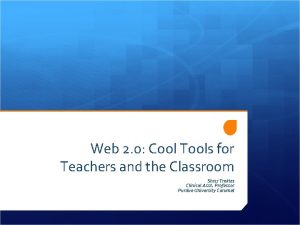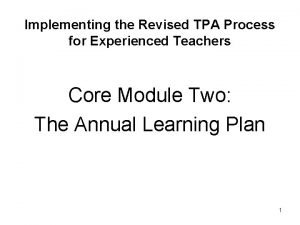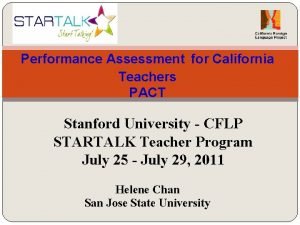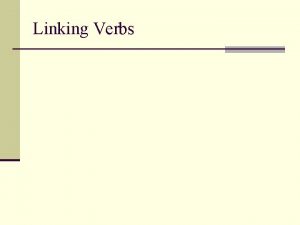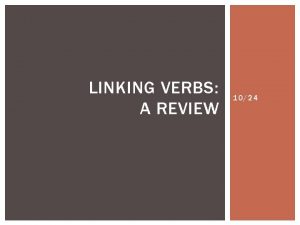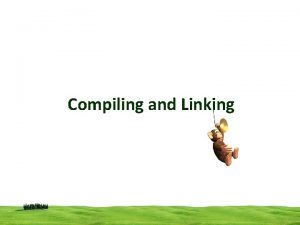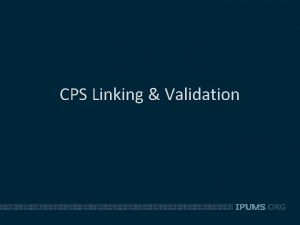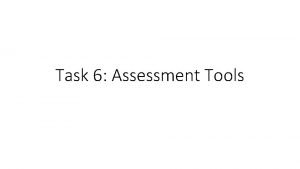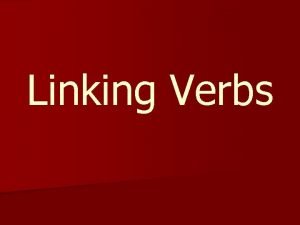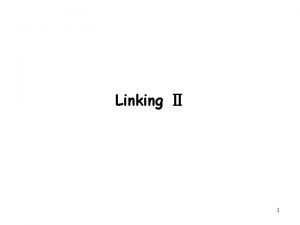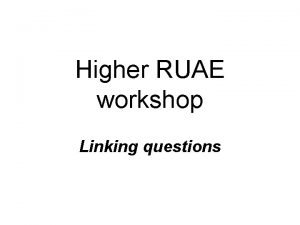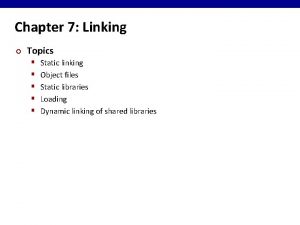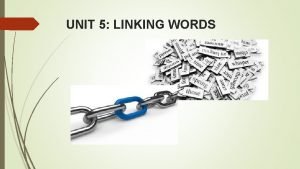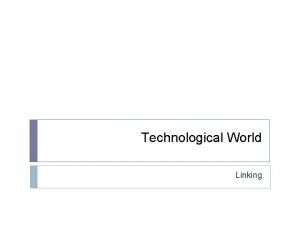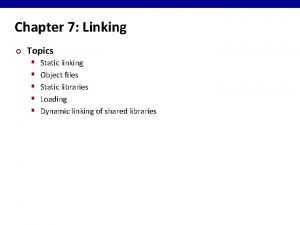Tools for Teachers Linking Assessment and Learning Assessment
































- Slides: 32

Tools for Teachers Linking Assessment and Learning “Assessment should be an integral part of teaching. It is the mechanism whereby teachers can learn how students think about mathematics as well as what students are able to accomplish. ” Everybody Counts


7 th Grade Pizza Crust 2006

7 th Grade – Task 3: Pizza Crusts Work the task and examine the rubric. What do you think are the key mathematics the task is trying to assess? Look at student work in part 1 a and 1 b. How many of your students are confusing area and perimeter?

Now look at student work for 2 a. • How many of your students confused 36 sq. in. for the perimeter instead of the area? What would their answer have been? • How many of your students put the length of one edge instead of the total length of the crust? Look at the work for designing a rectangle. • How many of your students gave dimensions that would yield an area different than 36 sq. inches? • How many of your students gave dimensions that would yield a perimeter of 36 inches? • How many of your students gave dimensions that would not create a rectangle? • What other types of errors did you find?

Student G makes the common error of confusing area and perimeter in part 2 a.

Student H draws in the units to find the perimeter in part 2 b. However, for both rectangles the area is 32 sq. instead of 36 square in.

While we predict tests will measure one core standard, the tasks are rich and allow other ideas to surface. This means that less tasks need to be used, but many standards are covered.


Collectively score and analyze student work Administer high-quality assessment tasks Cycle of Formative Assessment to Inform and Improve Learning Document student thinking to inform instruction. Leads to improved teaching and learning in the classroom (re-engagement lessons) Drives the professional development experiences of the teachers to plan experiences focused on their students.

Opportunity to Analyze Student Work

Design a Re-engagement Lesson • Do the task and identify the mathematics. • Consider how the students might approach the math. Where and how would they be successful? What challenges or misconceptions may arise? • Look through the student work. Categorize solution strategies, approaches and where students struggled. What is the story of the task? • Use the Tools for Teachers to compare your findings with the history of the tasks.


Viewing a Re-engagement Lessons The Mathematics Assessment Collaborative uses a process of formative assessment that examines student work and assessment results to inform instruction and design lessons to re-engage students in learning the mathematics.

Re-engagement Happens “Live” • The heart of the process is in the discussion, controversy, and convincing of the big mathematical ideas. • This is where students have the opportunity to clarify their own thinking, confront their misconceptions to see the errors in logic, use mathematical vocabulary for a purpose, and make generalizations and connections.

The design of a Re-engagement lesson may mirror a MARS task Access Core Ramp

Re-engagement • Makes use of actual student work - including unique thinking, misconceptions and strategies. • Has all students re-work a task from different perspectives. • Confronts misconceptions so that they can be dealt with and let go. • Gives some students strategies for solving problem • Helps other students solidify, connect, and clarify their ideas.

Video Clip 1

Small Group Discussions How was the re-engagement lesson designed to provide access? What were the basic concepts the students needed to learn and understand? How were the students making sense of the mathematics? What did the students communicate? What did the teachers emphasize?

Re-engagement • Use student work and their thinking to surface understanding and misconceptions. • Use student work to address access into basic concepts and foundational understanding.

Video Clip 2

Small Group Discussions What is the core mathematics of the task? What experiences in the lesson focused learning around the core mathematics? How was student work used to promote understanding of the core mathematics? Describe evidence of students demonstrating that understanding. Where are students still struggling?

Re-engagement • Use student work to confront common misconceptions. • Use student work to apply or adapt new or unfamiliar strategies. • Use student work to “debug” unsuccessful approaches or flawed reasoning. This process promotes learning core concepts.

Video Clip 3

Small Group Discussions Describe the components of the lesson that supported students to work at high cognitive levels. What aspects of the lesson encouraged students to make connections? How did students demonstrate deeper understanding of the mathematical concepts? What did the teacher do to facilitate deeper student thinking?

Re-engagement • Use student work to critique other students’ solutions and processes in order to deepen understanding and ramp up the cognitive load of the task.


Effective Formative Assessment Strategies • Clarifying learning intentions and sharing criteria for success. • Engineering effective classroom discussions. • Providing feedback that moves learners forward. • Activating students as the owners of their own learning. • Activating students as instructional resources for one another. Dylan Wiliam, University of London

Formative Assessment Tools • • • Common Core Standards MARS Tasks Scoring Materials and Protocols Tools For Teachers (Toolkits) Student Works Analysis Tools Re-engagement Lesson Videos

Option 1: Intensive Implementation Strategy Year 1: Induction to the Formative Assessment Cycle Year 2: Next Generation Assessments Year 3: Sustaining and Going Deeper Training on the Formative Assessment Cycle to Teams of Teachers 4 -days September Centralized Location conducted by MAC Facilitators Local Formative Assessment Session 6 days for Teams led by MAC Facilitator Training for Next Generation Assessments to Teams of Teachers Local Formative Assessment Session 4 -days Aug/Sep Centralized Location conducted by MAC Facilitators 6 days for Teams led by MAC Facilitator Local Formative Assessment Session 6 days for Teams led by Teachers Next Generation Assessments Taught Reengagement lessons taught Next Generation Assessments Taught

Option 2: : Introductory Training with Gradual Support Strategy Year 1: Induction to the Formative Assessment Cycle Year 2: Next Generation Assessments Training on the Formative Assessment Cycle to Teams of Teachers 3 -days September Centralized Location conducted by MAC Facilitators Local Formative Assessment Session 3 days for Teams led by MAC Facilitator Training for Next Generation Assessments to Teams of Teachers Local Formative Assessment Session 3 -days Aug/Sep Centralized Location conducted by MAC Facilitators 4 days for Teams led by MAC Facilitator Next Generation Assessments Taught

Option 3: Leader Training and Indirect Support Strategy Intensive Training for District Math Leaders One Year Option For District Math Leaders (DML) Trainer of Trainers Model to Support Target Teachers (TT) 4 -days September Centralized Location Conducted by MAC Follow-up Training for District Math Leaders 2 -days Oct/Nov Centralized Location Conducted by MAC Follow-up Training for District Math Leaders 2 -days Jan. Centralized Location Conducted by MAC Follow-up Training for District Math Leaders 2 -days Mar. Centralized Location Conducted by MAC Local Formative Assessment Session 1 day for TT conducted by DML
 Wang xiaomin
Wang xiaomin Kim kroll
Kim kroll Classroom development plan
Classroom development plan Cool tools for teachers
Cool tools for teachers Cuadro comparativo de e-learning b-learning y m-learning
Cuadro comparativo de e-learning b-learning y m-learning Annual learning plan ideas for teachers
Annual learning plan ideas for teachers Performance assessment for california teachers
Performance assessment for california teachers Kontinuitetshantering
Kontinuitetshantering Typiska novell drag
Typiska novell drag Tack för att ni lyssnade bild
Tack för att ni lyssnade bild Returpilarna
Returpilarna Varför kallas perioden 1918-1939 för mellankrigstiden?
Varför kallas perioden 1918-1939 för mellankrigstiden? En lathund för arbete med kontinuitetshantering
En lathund för arbete med kontinuitetshantering Personalliggare bygg undantag
Personalliggare bygg undantag Tidböcker
Tidböcker Sura för anatom
Sura för anatom Förklara densitet för barn
Förklara densitet för barn Datorkunskap för nybörjare
Datorkunskap för nybörjare Tack för att ni lyssnade bild
Tack för att ni lyssnade bild Debattinlägg mall
Debattinlägg mall Delegerande ledarskap
Delegerande ledarskap Nyckelkompetenser för livslångt lärande
Nyckelkompetenser för livslångt lärande Påbyggnader för flakfordon
Påbyggnader för flakfordon Vätsketryck formel
Vätsketryck formel Offentlig förvaltning
Offentlig förvaltning Jag har nigit för nymånens skära
Jag har nigit för nymånens skära Presentera för publik crossboss
Presentera för publik crossboss Teckenspråk minoritetsspråk argument
Teckenspråk minoritetsspråk argument Vem räknas som jude
Vem räknas som jude Treserva lathund
Treserva lathund Fimbrietratt
Fimbrietratt Bästa kameran för astrofoto
Bästa kameran för astrofoto Cks
Cks



